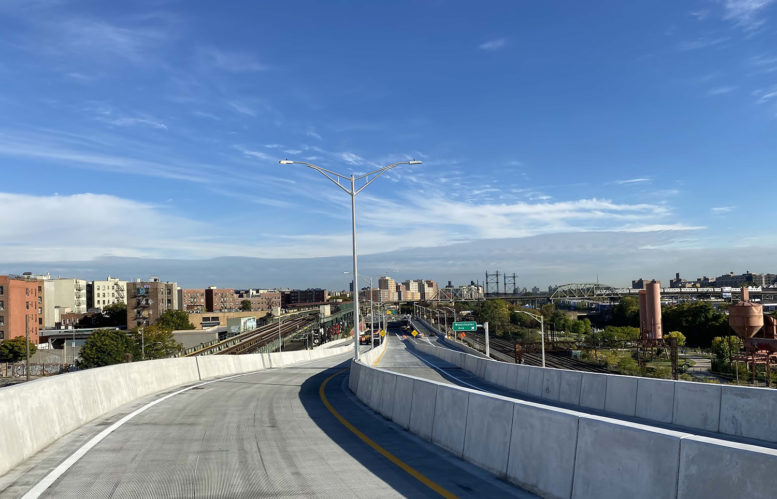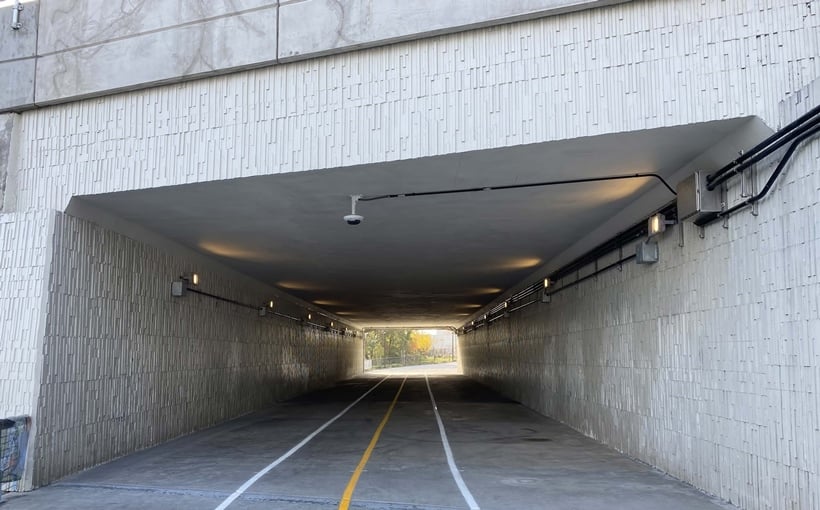Office Adaptive Reuse Task Force Builds on Adams Administration’s Efforts to Revitalize Central Business Districts and Expand Housing Supply With 11 Concrete Recommendations
With Recommendations in Place Alongside Current Rules, Office Conversions Could Create Homes for as Many as 40,000 New Yorkers Over Next Decade
New York City Mayor Eric Adams today unveiled recommendations from a city-led task force to facilitate the conversion of underused office space into new housing for New Yorkers. Crafted by the Office Adaptive Reuse Task Force, and led by New York City Department of City Planning (DCP) Director Dan Garodnick, the New York City Office Adaptive Reuse Study presents 11 concrete recommendations that would make changes to state laws and city zoning requirements in an effort to extend the most flexible conversion regulations to an additional 136 million square feet of office space — roughly the amount of office space in the entire city of Philadelphia. While property owners will make determinations whether to convert their buildings, with these recommendations in place and current city and state regulations, office conversions could potentially create as many as 20,000 homes in the next decade, enough to house up to 40,000 New Yorkers.
“With this study, we have a roadmap to deliver on a vision for a more vibrant, resilient, prosperous, and affordable city,” said Mayor Adams. “The need for housing is desperate, and the opportunity offered by underused office space is clear — we know what we need to do. These concrete reforms would clear red tape and create the incentives to create the housing we need for New Yorkers at all income levels. I want to thank the members of the task force for helping to chart the course, and I look forward to working with them and our partners in city and state government to deliver these much-needed reforms.”
“Enabling more offices to convert to housing will help us bring back our commercial districts while also addressing our housing supply crisis,” said Deputy Mayor for Economic and Workforce Development Maria Torres-Springer. “The recommendations in this report will set us on the path to achieving these critical goals, and I look forward to partnering with our colleagues in Albany and the City Council to ‘Get Stuff Built.’”
The study outlines a path forward to deliver on goals outlined in “‘New’ New York: Making New York Work for Everyone,” an action plan released in December by Mayor Adams and New York Governor Kathy Hochul — including reimagining the city’s commercial districts as vibrant 24/7 destinations, making Midtown Manhattan and other business districts more mixed-use and flexible, and expanding the city’s supply of housing. It also builds on Mayor Adams’ “Get Stuff Built,” “City of Yes,” and “Housing Our Neighbors” plans, which include significant steps to tackle the city’s severe housing shortage. Increasing opportunities to repurpose underused office space for housing and other uses is critical to achieving those goals.
“After every crisis, New York City reinvents itself, which is why it is so important for our codes and regulations to stay flexible. The Office Adaptive Reuse Task Force recommendations will help us meet the moment and rise to each new challenge with a built environment that is as dynamic and diverse as New Yorkers themselves,” said Chief Housing Officer Jessica Katz. “To solve our housing shortage, we need every tool possible. Our administration’s housing blueprint, Housing Our Neighbors, calls for leveraging zoning to encourage more affordable and supportive housing citywide, helping families access new neighborhoods with amenities, jobs, and schools close by, which every New Yorker deserves.”
“Our ability to remain a global leader in a rapidly evolving and changing economy will depend on our ability to adapt,” said DCP Director and City Planning Commission Chair Garodnick. “Working closely with the City Council and our colleagues in Albany, we will build clear rules and set this city up for success.”
Implementing the task force’s recommendations would extend the most flexible conversion regulations to an additional 136 million square feet of office space — roughly the amount of office space in the entire city of Philadelphia. Credit: New York City Mayor’s Office
The Office Adaptive Reuse Task Force was convened by the Adams administration in July 2022 following Local Law 43, sponsored by New York City Councilmember Justin Brannan.
The task force’s recommendations include:
- Expanding the universe of office buildings with the most flexible regulations for conversion to residential use from buildings constructed through 1961 to those constructed through 1990 — easing the potential conversion process for an additional 120 million square feet of office space;
- Expanding flexible conversion regulations to all high-intensity office districts, including Downtown Flushing and the Bronx Hub — easing the potential conversion process for an additional 16 million square feet of office space;
- Finding opportunities to allow housing, whether through conversions or new construction, in a centrally located, high-density part of Midtown that currently prohibits residential development;
- Allowing office buildings to convert to various much-needed types of housing, including supportive housing;
- Providing flexibility for offices to convert all existing space into housing, eliminating limitations that incentivize only partial conversions or make conversion projects infeasible;
- Exploring and pursuing a tax incentive program to support the production of affordable and mixed-income housing through office conversions — adding to the city’s affordable housing stock without deterring other private investment in conversions and housing creation; and
- Creating a property tax abatement program to incentivize retrofitting office space for child care centers, building on Mayor Adams’ “Accessible, Equitable, High-Quality, Affordable: A Blueprint for Child Care & Early Childhood Education in New York City.”
These recommended reforms would be implemented via changes to state law and regulatory changes through a city zoning text amendment.
The task force included 12 members with a wide range of experience in architecture, development, economics, finance, law, and advocacy:
- Dan Garodnick, Director, DCP and Chair, City Planning Commission (task force chair)
- Kim Darga, Deputy Commissioner, New York City Department of Housing Preservation and Development (HPD)
- Cecilia Kushner, Chief Strategy Officer, New York City Economic Development Corporation (NYCEDC)
- Wendy Wan, Director of Architecture, New York City Department of Buildings (DOB)
- James Colgate, Partner, Bryan Cave Leighton Paisner
- Basha Gerhards, Senior Vice President of Planning, Real Estate Board of New York (REBNY)
- Denis Johnston, Executive Vice President, 32BJ SEIU
- Nicole Larusso, Senior Director of Research, CBRE
- Gary Rodney, Head of Affordable Housing, Tishman Speyer
- Wendi Shafran, Principal, FXCollaborative
- Cea Weaver, Campaign Coordinator, Housing Justice for All
- Michael Zenreich, Principal, Michael Zenreich Architects
“From designing the street grid to rebuilding after 9/11, New York City exists in a constant state of evolution and aspiration. Today, our commercial office buildings offer the opportunity to meet the changing needs of the city, including the critical need for housing,” said HPD Commissioner Adolfo Carrión Jr. “The recommendations from the Office Adaptive Reuse Task Force aim to ensure the city’s built environment keeps us thriving as a city of opportunity.”
“It is essential for New York City to be adaptive to the changing needs and dynamics of New Yorkers in this post-pandemic era,” said NYCEDC President and CEO Andrew Kimball. “The recommendations laid out in this report build off those put forth in the ‘Making New York Work for Everyone’ action plan to reimagine 24/7 commercial districts across New York City. These proposals are designed to aid in the transformation of single-use commercial hubs into mixed-use, live-work environments and are necessary to building a more vibrant and inclusive economy for all New Yorkers.”
“Outdated regulations that no longer serve their intended purpose are a roadblock to solving some of the most intractable challenges the city is facing today,” said Acting DOB Commissioner Kazimir Vilenchik, P.E. “The necessary changes to the New York State Multiple Dwelling Law and the city’s Zoning Resolution recommended in this study will finally give property owners a pathway to convert their empty office buildings into the housing this city desperately needs. I applaud the task force on their commonsense recommendations to reduce red tape and streamline the conversion process.”
“Successfully addressing our city’s dire housing crisis requires creative solutions, and the Council is proud to have passed legislation to create this task force to advance important recommendations for converting underused office space into new housing,” said New York City Council Speaker Adrienne Adams. “Our recovery from the pandemic requires employing concrete tools, flexibility, and thoughtful strategies to create homes for New Yorkers and strengthen our central commercial districts. I look forward to working with the administration and our state partners to confront the housing shortage, ensuring that New York remains an affordable place to live, work, and raise a family for all.”











